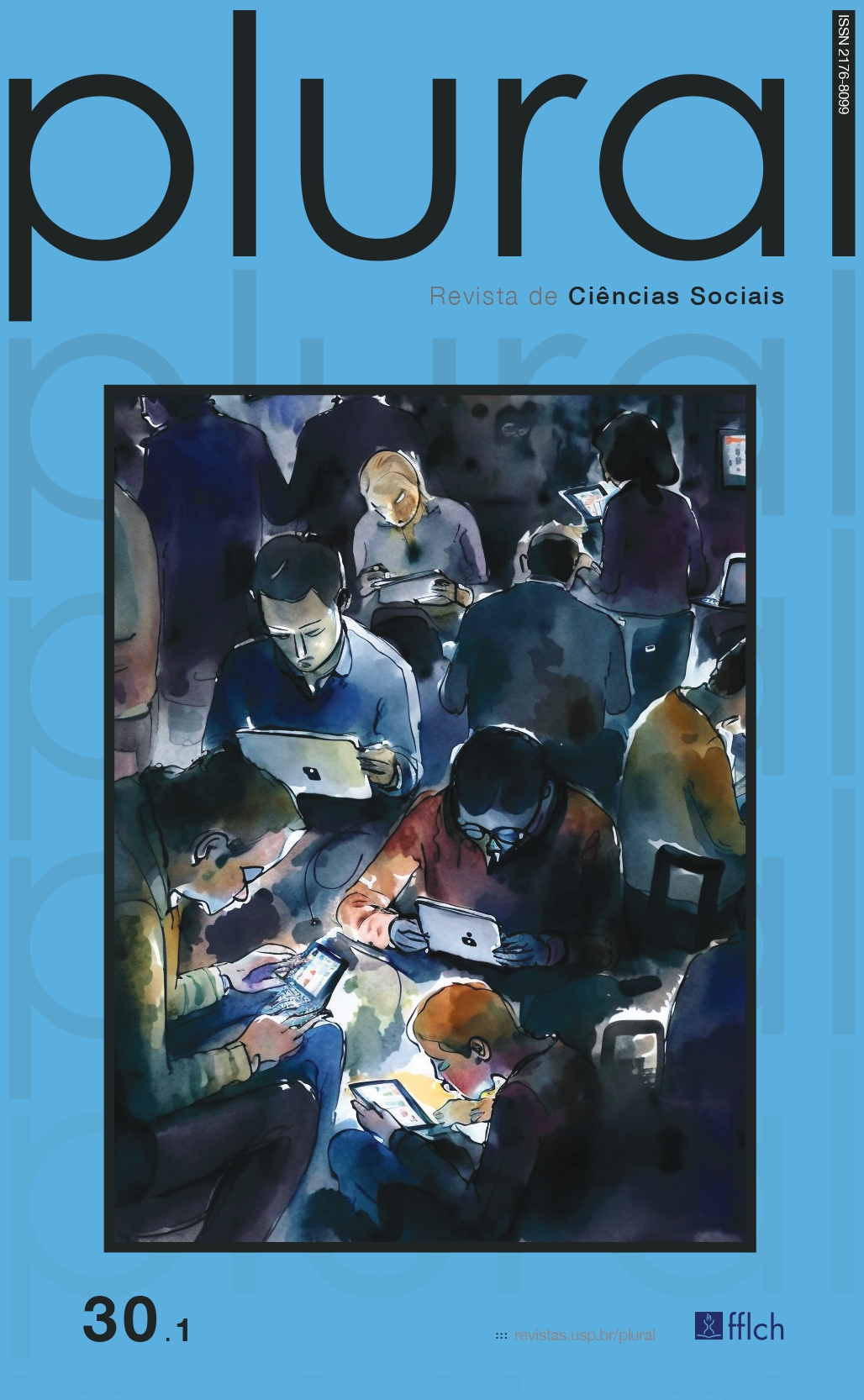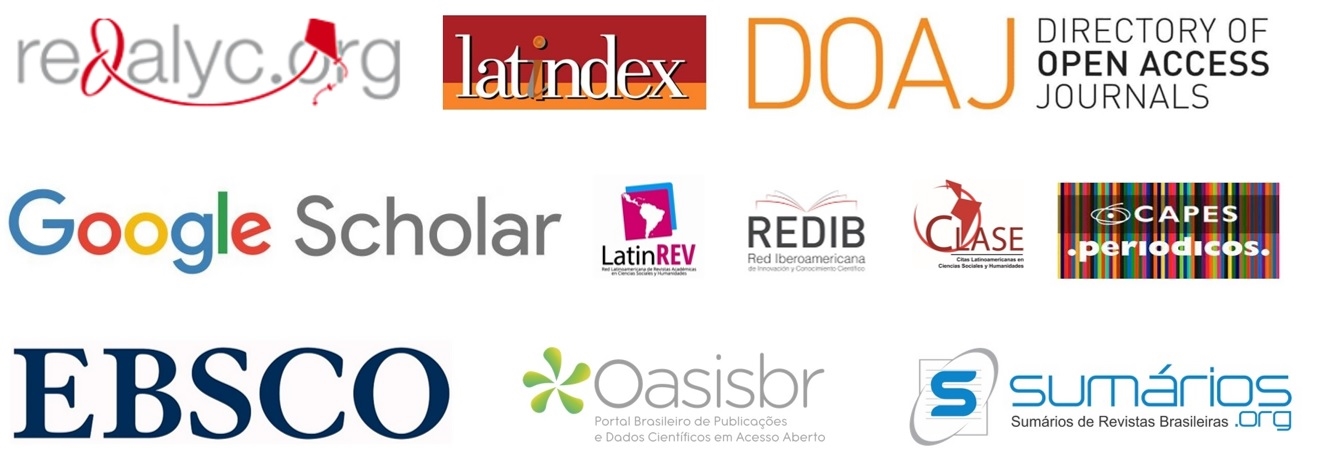A “Corte” nas redes: uma análise dos perfis dos Ministros do Supremo Tribunal Federal (STF) no Twitter
DOI:
https://doi.org/10.11606/issn.2176-8099.pcso.2023.205567Palavras-chave:
Supremo Tribunal Federal, Twitter, Legitimidade, Poder Judiciário, Métodos DigitaisResumo
O presente artigo debate o uso de redes sociais por parte dos Ministros do Supremo Tribunal Federal (STF), tomando como base o Twitter. A pesquisa identifica uma lacuna com relação a estudos sociológicos e empíricos em direito sobre a produção de conteúdo digital em redes sociais realizada por magistrados. A hipótese é que o impacto e a qualidade do conteúdo produzido ainda precisam ser melhor estimados. O estudo utiliza-se da combinação de uma metodologia quantitativa de análise de redes sociais, com uso de métodos digitais, e de uma metodologia qualitativa para a análise do conteúdo dos posts do Twitter dos Ministros do STF. Evidenciamos que, embora haja poucas postagens dos Ministros, há constantes menções aos temas de direitos fundamentais, fato que traz esse conteúdo para os limites do direito e da política. O artigo conclui por lançar questionamentos acerca do alcance dessas postagens, bem como os debates sobre liberdade de expressão na magistratura brasileira e a crença na legitimidade democrática das instituições como o STF.
Downloads
Referências
ALMADA, Pablo; PEREIRA, Natasha. (2022). Redes, Mídias Sociais e Discurso: Uma Análise Bibliométrica dos Estudos Brasileiros do Campo entre 2010-2021. Mediações - Revista de Ciências Sociais, Londrina, v. 27, n. 2, p. 1-22.
BASTIAN, Mathieu; HEYMANN, Sebastien; JACOMY, Mathieu (2009). Gephi: an open source software for exploring and manipulating networks. International AAAI Conference on Weblogs and Social Media.
BASTIAN, Mathieu et al (2014). ForceAtlas2, a Continuous Graph Layout Algorithm for Handy Network Visualization Designed for the Gephi Software. PLoS ONE, 9(6): e98679. https://doi.org/10.1371/journal.pone.0098679.
BLONDEL, Vincent et al (2008). Fast unfolding of communities in large networks. Journal of Statistical Mechanics: Theory and Experiment, 10, p. 1000.
BONELLI, Maria da Glória; OLIVEIRA, Fabiana; MARTINS, Rennê (2006). Profissões jurídicas, identidades e imagem pública. São Carlos: EdUFSCar.
BOTTOMS, Anthony; TANKEBE, Justice. (2012). Criminology: Beyond Procedural Justice: a Dialogic Approach To Legitimacy in Criminal Justice. Journal of Criminal Law & Criminology, v. 102, n. 1, p. 119-70.
BOULIANNE, Shelley (2015). Social media use and participation: a meta-analysis of current research. Information, Communication & Society, 18:5, 524-38. https://doi.org/10.1080/1369118X.2015.1008542.
CASTELLS, Manuel (1999). A sociedade em rede. Lisboa: Calouste Gulbenkian. CESARINO, Letícia (2022). O mundo do avesso: verdade e política na era digital. São Paulo: Ubu Editora.
COENE, Jean-Philippe (2018). sigma.js for R. A powerful, full featured R package for interactive graph visualization. www.sigmajs.john-coene.com. (acesso em 18/09/2022).
COLETTA, Ricardo Della (2021). ‘Ou fazemos eleições limpas no Brasil ou não temos eleições’, diz Bolsonaro em nova ameaça. Folha de S. Paulo, São Paulo, 08/07/2021. Disponível em: https://www1.folha.uol.com.br/poder/2021/07/ou-fazemos-eleicoes- limpas-no-brasil-ou-nao-temos-eleicoes-diz-bolsonaro-em-nova-ameaca.shtml (acesso em 24/11/2022).
CONSELHO NACIONAL DE JUSTIÇA (2008). Código De Ética Da Magistratura Nacional, Brasília, DF. Disponível em: https://www.cnj.jus.br/wpcontent/uploads/2011/01/codigo_de_etica_da_magistratura_nacional.pdf (acesso em 03/04/2023).
CONSELHO NACIONAL DE JUSTIÇA (2019). O uso de redes sociais por magistrados do poder judiciário brasileiro. Brasília: CNJ.
CONSELHO NACIONAL DE JUSTIÇA (2019). Resolução No 305 de 17/12/2019. Disponível em: https://atos.cnj.jus.br/atos/detalhar/3124 (acesso em 13/10/2022).
CREMONESE, Dejalma (2012). Política on-line: a utilização do Twitter como ferramenta de capital social nas eleições presidenciais de 2010. Sociedade e Cultura, v. 15, n. 1, p. 135–49.
DONK, Wim van de et al (2004). Cyberprotest: new media, citizens and social movements. London: Routledge.
FAGAN, Jeffrey. (2007) Criminal justice, law and legitimacy. Ohio State Journal of Criminal Law, v. 6, p.123-40.
FUCHS, Christian (2011). Foundation of critical media and informational studies. London: Routledge.
FUCHS, Christian (2014). Social Media: A Critical Introduction. London: SAGE Publications.
GISI, B., JESUS, Maria Gorete M. de; SILVESTRE, G. (2019). O contato com o público importa? Uma análise exploratória sobre a construção da auto-legitimidade entre juízes paulistanos. Plural, 26(2), 247-270. https://doi.org/10.11606/issn.2176-8099. pcso.2019.165683.
GUO, Lei; ROHDE, Jacob A.; WU, H Denis (2020). Who is responsible for Twitter’s echo chamber problem? Evidence from 2016 US election networks. Information, Communication & Society, v. 23, n. 2, p. 234–51. https://doi.org/10.1080/1369 118X.2018.1499793.
JACKSON, Jonathan, et al. (2012). Why do people comply with the law? Legitimacy and the influence of legal institutions. British Journal of Criminology, v. 52, n. 6, p. 1051-71.
JUNGHERR, Andreas (2015). Analyzing political communication with digital trace data: the role of Twitter messages in social science research. Wiesbaden: Springer.
JUNGHERR, Andreas et al (2017). Digital Trace Data in the Study of Public Opinion: An Indicator of Attention Toward Politics Rather Than Political Support. Social Science Computer Review, v. 35, n. 3, p. 336–56. https://doi.org/10.1177/0894439316631043.
LÉVY, Pierre (1999). Cibercultura. São Paulo: Ed. 34.
LUPTON, Deborah (2015). Digital Sociology. New York: Routledge.
NEV. CEPID FAPESP PROGRAM (2016). BUILDING DEMOCRACY DAILY: HUMAN RIGHTS, violence and institutional trust. 3rd Report. São Paulo: NEV-USP.
MCCAY, Lori; QUAN-HAASE, Anabel (2017). “What is Social Media and What Questions Can Social Media Research Help Us Answer?” In: SLOAN, Luke; QUAN-HAASE, Anabel (ed.). The SAGE Handbook of Social Media Research Methods. Los Angeles: SAGE.
MEDEIROS, Damião; JESUS, Maria G. Marques de (2018). Os juízes nas mídias e redes sociais: percepções sobre os impactos na imagem do poder judiciário e sua legitimidade diante das mídias virtuais. In: X Congresso da ABRASD, São Paulo. Anais do X Congresso da ABraSD: 55 anos de ensino da Sociologia Jurídica no Brasil, São Paulo: ABraSD.
MIGALHAS (2022). EM VOTO, Moraes valida regras a membros do Judiciário em redes sociais. Disponível em: https://www.migalhas.com.br/quentes/377255/ em-voto-moraes-valida-regras-a-membros-do-judiciario-em-redes-sociais (acesso em 23/11/2022).
O’BOYLE, Jane; PARDUN, Carol (2021). How Twitter drives the global news agenda: Tweets from Brazil, Russia, India, China, the UK and US and online discourse about the 2016 US presidential election. Global media and communication, v. 17, n. 3, p. 363-84. https://doi.org/10.1177/17427665211039970.
OLIVEIRA, Fabiana Luci de; CUNHA, Luciana Gross (2017). A legitimidade das leis e das instituições de justiça na visão dos brasileiros. Contemporânea, v. 7, n. 2, p. 275-96.
OSÓRIO, Fábio M. (2020). Reflexões sobre o conceito de atividade político-partidária de juízes: inaugurações de obras públicas, atuações em redes sociais e participações em cultos religiosos. Revista da Escola da Magistratura do TRF da 4a Região, n. 16, p. 109-25.
PEETERS, Stijn; HAGEN, Sal (2021). The 4CAT Capture and Analysis Toolkit: A Modular Tool for Transparent and Traceable Social Media Research. Computational Communication Research, 4(2): 571-89. http://dx.doi.org/10.2139/ssrn.3914892.
PERŠAK, Nina. (2016). Procedural Justice Elements of Judicial Legitimacy and their Contemporary Challenges. Oñati Socio-legal Series, 6 (3), 749-70.
RECUERO, Raquel (2020). #FraudenasUrnas: estratégias discursivas de desinformação no Twitter nas eleições 2018. Revista Brasileira de Linguistica Aplicada, v. 20, n. 3, p. 383–406. http://dx.doi.org/10.1590/1984-6398202014635.
RECUERO, Raquel; SOARES, Felipe B (2017). Opinião Pública no Twitter: análise da indicação de Alexandre de Moraes ao STF. Logeion: Filosofia da Informação, [S. l.], v. 3, n. 2, p. 18–37.
RECUERO, Raquel; SOARES, Felipe; ZAGO, Gabriela (2019). Using Social Network Analysis and Social Capital to Identify User Roles on Polarized Political Conversations on Twitter. Social Media + Society, 5(2). https://doi.org/10.1177/2056305119848745.
ROGERS, Richard (2013). Digital Methods. Cambridge: The MIT Press.
ROGERS, Richard (2017). Foundations of Digital Methods: Query Design. In: SCHÄFER, Mirko T.; ES, Karin van (ed.). The Datafied Society: Studying Culture through Data. Amsterdam: Amsterdam University Press, p. 75–94.
ROTTMAN, David B.; TYLER, Tom R. (2014). Thinking about Judges and Judicial Performance: Perspective of the Public and Court Users. Oñati Socio-legal Series [online], v. 4, n. 5, p. 1046-70.
SÁ E SILVA, Fabio de (2022). Relational legal consciousness and anticorruption: lava jato, social media interactions, and the co-production of law’s detraction in brazil (2017-2019). Law & Society Review, v. 56, n. 3, p. 344-68. http://dx.doi.org/10.1111/ lasr.12620.
SCHMIDT, Ítala C. B.; LOBO, Marcela S.; LEITE, Rosimeire V. (2021). Comunicação institucional do Poder Judiciário: Reflexões sobre a normatização da presença de tribunais e juízes nas redes sociais pelo Conselho Nacional de Justiça. Revista de Direito, Governança e Novas Tecnologias, vol. 7, no. 2, p. 52-64.
SILVA, Maurílio L. H. (2022). Comunicação pública nas mídias e redes sociais digitais: uma análise do Judiciário Brasileiro no Twitter.” In: MEDEIROS, Magno; MAINIERI, Tiago (orgs.). Comunicação pública e cidadania: experiências e práticas inovadoras. Goiânia : Cegraf UFG, p. 296-313.
SNEE, Helene et al (2016). Digital Methods for Social Science. An interdisciplinary guide to research innovation. New Yortk: Palgrave Macmillan.
TYLER, Tom R. (2003). Procedural Justice, Legitimacy, and the Effective Rule of Law. Crime and Justice, v.l. 30, p. 283-357.
TYLER, Tom R. (2006). Restorative justice and procedural justice: dealing with rule breaking. Journal of Social Issues, v. 62, n. 2, p. 307-26.
TYLER, Tom R. (2007). Procedural Justice and the Courts. Court Review: The Journal of the American Judges Association, v. 44, n. 1/2, p. 26-31.
UOL (2022). Monark defende existência de partido nazista dentro da lei; Tabata rebate. Disponível em: https://noticias.uol.com.br/politica/ultimas-noticias/2022/02/08/podcaster-monark-partido-nazista.htm. (acesso em 24/11/2022).
VERGEER, Maurice (2015). Twitter and Political Campaigning. Sociology Compass, v. 9, n.9, p. 745–60. https://doi.org/10.1111/soc4.12294.
VIEIRA, Leandra; FACCHINI NETO, Eugênio (2020). Os magistrados na era digital: uma comparação entre países sobre o uso nas redes sociais. Anais dos Congressos Estaduais de Magistrados – RS – Porto Alegre, v. 1, n. 1, p. 135-39.
ZUBOFF, Shoshana (2018). The age of surveillance capitalism: the fight for a human future at the new frontier of power. New York: Public Affairs.
Publicado
Edição
Seção
Licença
Copyright (c) 2023 Política de direitos compartilhados

Este trabalho está licenciado sob uma licença Creative Commons Attribution-NonCommercial-ShareAlike 4.0 International License.
Ao submeter seu trabalho à Plural, o autor concorda que: o envio de originais à revista implica autorização para publicação e divulgação, ficando acordado que não serão pagos direitos autorais de nenhuma espécie. Uma vez publicados os textos, a Plural se reserva todos os direitos autorais, inclusive os de tradução, permitindo sua posterior reprodução como transcrição e com devida citação de fonte. O conteúdo do periódico será disponibilizado com licença livre, Creative Commons - Atribuição NãoComercial- CompartilhaIgual –, o que quer dizer que os artigos podem ser adaptados, copiados e distribuídos, desde que o autor seja citado, que não se faça uso comercial da obra em questão e que sejam distribuídos sob a mesma licença (ver: http://www.creativecommons.org.br/).







